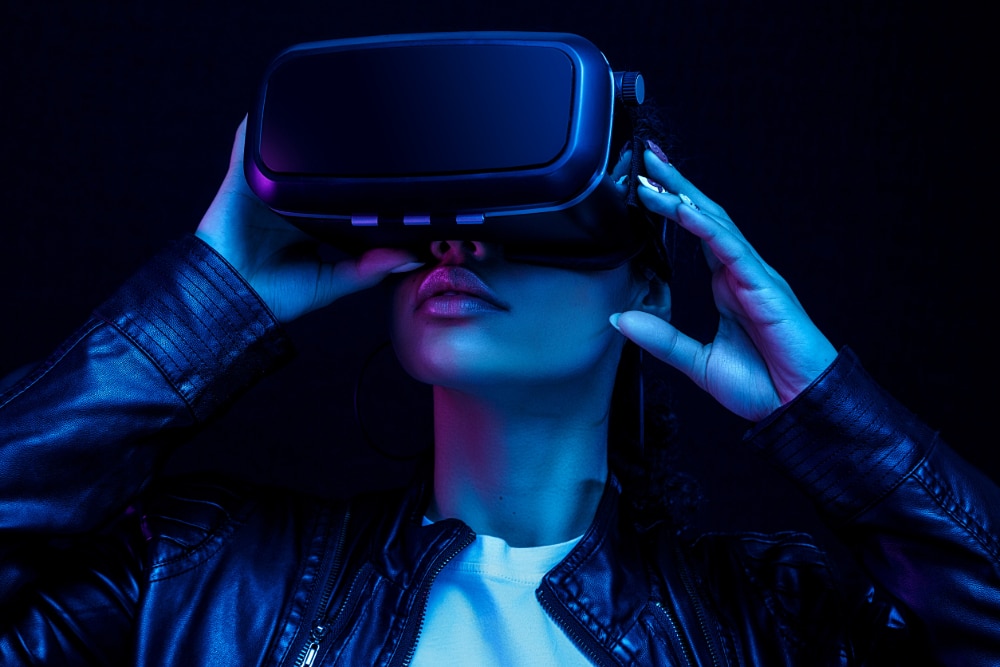Virtual Reality and Future-Self Avatars Work Wonders for Addiction Recovery

Imagine a video experience so powerful it could stop drug addicts in their tracks. When I was in high school, they showed us Red Asphalt, a film produced by the California Department of Public Safety that was designed to scare people from drinking and driving. Red Asphalt contains graphic video of human beings turned into hamburger as a result of automobile accidents.
The evidence is mixed on whether graphic videos such as Red Asphalt actually improve driving results. They may have reduced the inclination to drink and drive, but they did not reduce accidents. The reason cited in a 2024 systematic review in the Journal of Safety Research is that watching video does not improve driving skills. Actually driving, being taught how to drive, and practicing driving leads to safer driving, not watching videos.
The evidence is not mixed, however, when it comes to the use of virtual reality in the treatment of substance use disorders (SUDs). A 2022 study published in Discover Mental Health achieved very promising results from a very small group of 21 persons in the first year of treatment for SUDs. Let’s break it down.
In addition to the standard treatment, participants received a daily VR intervention for 30 days. The VR intervention is based on presenting the patient with two possible future outcomes each day. Both outcomes are the same person, the patient, aged by artificial intelligence 15 years into the future. Both outcomes are based on the patient’s likeness and voice, aged 15 years. One outcome foresees 15 years of substance abuse (the “SUD Future Self”), the other, 15 years of abstinence (the “Recovery Future Self”).
The patient wears a virtual reality headset for a roughly five-minute session every day for 30 days. Each session contains four scenes. The opening scene has a narrator explaining how the VR works. Then the patient sees a park-like setting with two park benches with seated avatars for his two future selves. When the patient chooses which one to talk to, the second scene begins.
The SUD Future Self describes and looks like what 15 more years of substance abuse would add up to: low earnings, poor health, a dangerous group of friends. The Recovery Future Self describes and looks like what 15 years of sobriety typically results in: more income, fewer health problems, and fewer scary encounters with questionable individuals.
If the patient chooses to talk with the Recovery Future Self in scene two, the SUD Future Self is scene three. If the patient starts with the SUD Future Self in scene two, then the Recovery Future Self is scene three. Scene four is a debriefing. The four-scene sessions took an average of 5.7 minutes to complete.
It’s important to note that the conversations with the Future Selves are based on extensive screening and interviewing with patients about how they see themselves as they age down each of these paths. The looks, voices, and mannerisms of the avatars are based on aging the looks, voices, and mannerisms of the Present Selves of the patients. The avatars can tell when eye contact is being made during the session and whether or not the patient is engaged. The avatars will pause if not being listened to.
After the intervention, participants complete a series of evaluations:
Participants completed delay discounting, the emotion questionnaire, and [a] confidence in recovery item before and after the VR intervention, and the VR Inventory after the intervention.
Delay Discounting was measured by patients choosing between smaller immediate versus larger delayed monetary rewards (in fact, all rewards were $20 per session). The “emotion questionnaire” appears to be a series of measurements including the Adverse Childhood Experiences Questionnaire, the Zimbardo Time Perspective Inventory, and the Sensitivity to Punishment/Reward Questionnaire. Confidence in Recovery is just that: On a scale of 1 to 100, how confident are you of maintaining recovery?
The results are pretty impressive:
- the intervention generated no adverse events, was well tolerated
- the intervention significantly increased future self-continuity
- the intervention delayed reward preference, doubling delay tolerance
- the intervention reduced craving
Thirty days after completing the treatment plan, 18 of the 21 patients remained abstinent. Importantly, the researchers note, “increased future self-similarity persisted.” This is a measure recorded after each session about how well patients felt the Future Selves portrayed were actually like them. Researchers elaborate on the significance of increased future-self similarity:
All individual participants showing increased future self-similarity post-VR remained abstinent, and all participants who relapsed showed either reduced or zero effect on future self-similarity.
Increase or decrease in self-similarity was the toggle between those who relapsed and those who remained abstinent.
Two of the researchers involved in the study have since formed a startup corporation to develop the use of virtual reality for the treatment of SUDs. The company is called Relate XR and the researchers are Brandon G. Oberlein at the Indiana University Medical School in Indianapolis and virtual reality entrepreneur, Andrew J. Nelson, an IU alumnus. They have combined forces with Izzy Branham, a specialist in virtual reality at IU and CEO of Relate XR.
The three entrepreneurs were the subject of a feature article recently in IU News. Their VR addiction intervention is now in a larger clinical trial involving 100 patients in treatment for opioid use disorder. We’ll continue to cover advances in virtual reality and addiction recovery here at AddictionNews.
Written by Steve O’Keefe. First published April 16, 2025.
Sources:
“The effectiveness of driving simulator training on driving skills and safety in young novice drivers: A systematic review of interventions,” Journal of Safety Research, December 2024.
“Virtual reality intervention effects on future self-continuity and delayed reward preference in substance use disorder recovery: pilot study results,” Discover Mental Health, September 15, 2022.
“Startup supports addiction recovery through VR therapy using ‘future-self avatars’,” IU News, March 10, 2025.
“Virtual Reality Facilitation of Recovery from Opioid Use Disorder,” Clinical Trial, Awarded September 8, 2022.
Image Copyright: azat180885.




